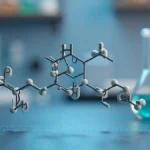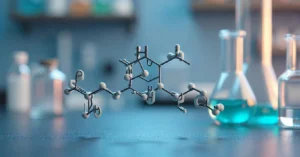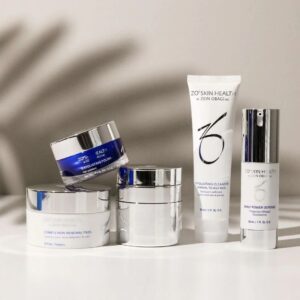Prenatal exposure to polychlorinated biphenyls (PCBs) has become a significant concern due to its potential neurodevelopmental consequences. Once widely used in industrial and commercial applications, PCBs persist in the environment and can accumulate in the food chain. This can lead to human exposure.
There are many sources of exposure to PCBs. An NCBI article mentions that the main pathways for exposure to dioxins and PCBs are through the skin, lungs, and gastrointestinal tract. Among that, around 90% of human exposure is through the gastrointestinal tract.
This article aims to explore the neurological impact of prenatal PCB exposure and its implications for cognitive development.
Understanding PCBs
Polychlorinated biphenyls (PCBs) are a group of synthetic organic chemicals extensively used in various industrial applications. These applications include electrical equipment, plastics, etc. Their production was banned in many countries in the late 1970s and early 1980s due to environmental and health concerns.
Despite the ban, PCBs persist in the environment due to their chemical stability and resistance to degradation. It is why PCBs are called persistent organic pollutants (POPs). A study from ACS Publications also states that over 10 million tonnes of PCB-containing materials remain globally. They are largely present in countries that cannot manage PCB waste.
PCB exposure has been linked to numerous conditions besides the neurological impact on prenatal. According to TorHoerman Law, it has also been linked to liver, brain, breast, and other cancers. In fact, when studies establishing the link were out, many individuals filed PCB lawsuits. Lawsuits for PCB exposure and subsequent health issues are currently being examined. Hence, many lawyers across the US are accepting new cases.
If you face any PCB exposure symptoms, you can also contact an attorney and file a lawsuit. If enough evidence proves that your health condition is due to PCB exposure, you can win a decent settlement amount.
PCBs and Prenatal Exposure
Prenatal exposure to PCBs occurs primarily through maternal transfer via the placenta. These chemicals can accumulate in maternal adipose tissue and cross the placental barrier during pregnancy. Once exposed, PCBs can interfere with various neurodevelopmental processes, including neuronal migration, synaptogenesis, and neurotransmitter function, leading to long-term neurological consequences.
Several epidemiological studies have investigated the association between prenatal PCB exposure and neurodevelopmental outcomes in children. These studies have consistently reported adverse effects on cognitive function among children with higher prenatal PCB exposure levels. Some of the cognitive function problems include deficits in IQ, memory, attention, and executive function.
Besides the neurodevelopmental issues, PCB exposure in the prenatal state is also linked to various other health problems. For instance, a ScienceDirect study shows its connection with fetal liver and adipose tissue. The study reveals that pregnancies ending in stillbirth show PCB concentrations in the late gestation period. It shows concentrations in fetal liver and adipose tissue 3x and 50x higher than normal.
Mechanisms of Neurotoxicity
The neurotoxic effects of prenatal PCB exposure are believed to result from multiple mechanisms. These can include disruption of neurotransmitter systems, interference with thyroid hormone function, and induction of oxidative stress and neuroinflammation. PCBs can alter the balance of neurotransmitters such as dopamine, serotonin, and glutamate, which play critical roles in regulating mood, cognition, and behavior.
Furthermore, PCBs can interfere with thyroid hormone signaling by displacing thyroid hormones from their binding proteins and inhibiting thyroid hormone synthesis and metabolism. Thyroid hormones are essential for brain development and function. Disruptions in thyroid hormone levels during critical gestation periods can have profound and long-lasting effects on neurodevelopment.
In addition, PCBs can induce oxidative stress by generating reactive oxygen species and impairing antioxidant defence mechanisms in the brain. Oxidative stress can damage cellular components, including lipids, proteins, and DNA, and contribute to neuronal dysfunction and cell death. Moreover, PCB-induced neuroinflammation, characterized by the activation of microglia and the release of pro-inflammatory cytokines, can further exacerbate neuronal injury and impair neurodevelopmental processes.
Implications for Public Health and Policy
The neurological impact of prenatal PCB exposure underscores the importance of regulatory measures to reduce human exposure to these environmental contaminants. Efforts to mitigate PCB exposure include banning the production and use of PCBs. Besides that, remediation of contaminated sites and monitoring and regulating PCB levels in food, water, and consumer products is also vital.
Old ships made before 1979 may have some harmful constituents that carry PCBs. Hence, measures are being taken to ensure PCB concentrations do not increase because of the ships.
According to the Environmental Protection Agency, the Maritime Administration requires owners to certify that there are no PCBs in their old ships. The concentration should not be higher than or equal to 50 ppm in the shipboard materials. These materials can include paint, electrical cabling, and gaskets.
Furthermore, healthcare providers play a crucial role in educating pregnant women about the potential risks of PCB exposure. They can also advise them on strategies to minimize exposure during pregnancy.
Minimizing PCB Exposure During Pregnancy
During pregnancy, minimizing exposure to potentially harmful substances is crucial for the health of both the mother and the developing baby. PCBs (polychlorinated biphenyls) are toxic chemicals that can pose risks to fetal development and pregnancy. Here are some tips to minimize PCB exposure during pregnancy:
- Avoid consumption of contaminated foods: PCBs can accumulate in the fatty tissues of animals. To minimize exposure, limit consumption of high-fat animal products such as fatty fish (e.g., swordfish, king mackerel, shark), which contain high levels of PCBs.
- Choose low-PCB fish options: Opt for low-PCB fish such as salmon, shrimp, canned light tuna, and catfish. These options generally contain lower levels of PCBs compared to high-fat fish.
- Eat organic foods: Organic foods are less likely to contain synthetic chemicals, including PCBs. Choosing organic options for fruits, vegetables, and dairy products can reduce exposure to harmful substances.
- Use safe cooking methods: When preparing food, use cooking methods that allow fat to drain away from the food, such as grilling, broiling, or baking. This can help reduce the intake of PCBs that may be present in fatty tissues.
- Avoid PCB-contaminated water: If you live in an area where water sources may be contaminated, consider using a certified water filtration system to remove PCBs. Be cautious about consuming water from private wells or sources with potential contamination.
- Be mindful of household products: PCBs were once used in various household products such as paints, sealants, and electrical equipment. Be mindful of old items containing PCBs and consider replacing them with safer alternatives.
To conclude, prenatal exposure to polychlorinated biphenyls (PCBs) poses significant risks to neurodevelopment and cognitive function in children. Emerging evidence from epidemiological studies and experimental research highlights the adverse effects of PCBs on neuronal structure and function.
Understanding the mechanisms underlying PCB-induced neurotoxicity is critical for developing effective strategies to prevent and mitigate the adverse neurological consequences of prenatal exposure. By implementing regulatory measures and promoting public awareness, we can strive to protect the developing brain and promote optimal neurodevelopmental outcomes.










